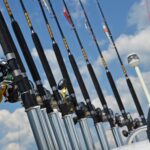Did you know that humans have been using fishing sinkers for more than 29,000 years now? Well, it’s true! The earliest evidence of fishing sinkers was discovered by archeologists in the eastern county of Jeongseon, South Korea.
They excavated fourteen limestone sinkers, each weighing between 14 to 52 grams. These sinkers had groves carved in them, making it easier to tie them to the bottom of fishing nets used to catch small fish in shallow waters.
Today, the sinkers that modern anglers use look much different than the limestone sinkers used back in the day. Modern fishing sinkers are typically made from lead and have holes in them to pass the fishing line through them. However, in states where small lead sinkers are prohibited, anglers use steel, alloy, tungsten, and tin sinkers that are more expensive than their lead counterparts.
Anglers use these sinkers to take baits and lures into deep waters where their target fish reside. When used effectively, fishing sinkers can help you position and present your bait to the fish precisely for excellent results. There are many types of fishing sinkers that you can use to enhance your fishing experience.
So, let’s explore the varied types of fish sinkers and how you can choose the ideal one for your fishing adventure.
How to Choose a Fish Sinker
You must know which sinker to use in different fishing conditions. It’s because if you choose the wrong sinker, you might face trouble getting to the bottom of the water bed where your target fish lives or your bait might drift too far away due to strong current.
Here are some factors that can help you choose the ideal fishing sinker:
Types of Fishing Sinkers
As mentioned earlier, there are a wide array of sinker weights at an angler’s disposal. You can choose between the diminutive split-shot fishing sinkers, the sliding fishing sinkers, and more. However, your choice will vary based on the fish you’re targeting and other pertinent factors.
With that said, it’s always a smart idea to carry a variety of fishing sinkers in your tackle box. It’s because you might need to change your fishing sinkers while fishing if the conditions change or if the weight isn’t giving you the desired results.
Water Depth
The depth of the water is a deciding factor when it comes to choosing the ideal sinker. Typically, you should use heavier sinkers for deeper waters and lighter sinkers for shallower water bodies. For shallow water, a ⅛-ounce sinker will work well to create a slow-falling lure.
However, a ¼ to ⅜-ounce sinker weight will work better in water that is about 20 feet deep. For deeper water, you will need your sinker to weigh ½ ounce to reach the fish at the bottom. If you want to reach fish underneath a patch of dense vegetation, you will need a sinker that weighs an ounce or two ounces. However, with heavier sinkers, it’s usually difficult to detect a bite.
Tidal and Wind Movement
Strong winds and tidal movements also play a key role in the sinker weight you choose. These can change your cast, blow and bend your line, and cause your bait to fall. To tackle stronger currents and winds, use a heavier sinker.
The Size of Your Bait/Lure
The type of sinker you use will also depend on the type and size of your chosen bait and the action you want it to perform. For instance, if you want your bait to glide slowly to the bottom, use a lighter sinker. On the flip side, when you want your bait to drag across the bottom, choose a heavier sinker. Also, consider the actions that will attract your target fish, and don’t be afraid to use your best judgment.
Line Diameter
If the wind and currents are strong, increase the weight of your sinker and reduce the diameter of your line for better control. Study the way your bait and line react to the conditions and adjust accordingly. Pay close attention to how the bait, line, and sinker are working in tandem.
Type of Fishing (Boat vs. Bank)
Your sinker weight and type will depend on whether you’re boat fishing or bank fishing. When fishing from a beat in stronger currents, you need your sinker to get your bait to the bottom and hold it steady. When fishing on a bank, you want your sinker to enable you to cast light bait at a distance so that it reaches the feeding fish. You will need to adjust the sinker weight to achieve these differing goals.
Types of Fishing Sinkers
Here are some types of fish sinkers you can use when fishing:
Split-Shot Fishing Sinkers
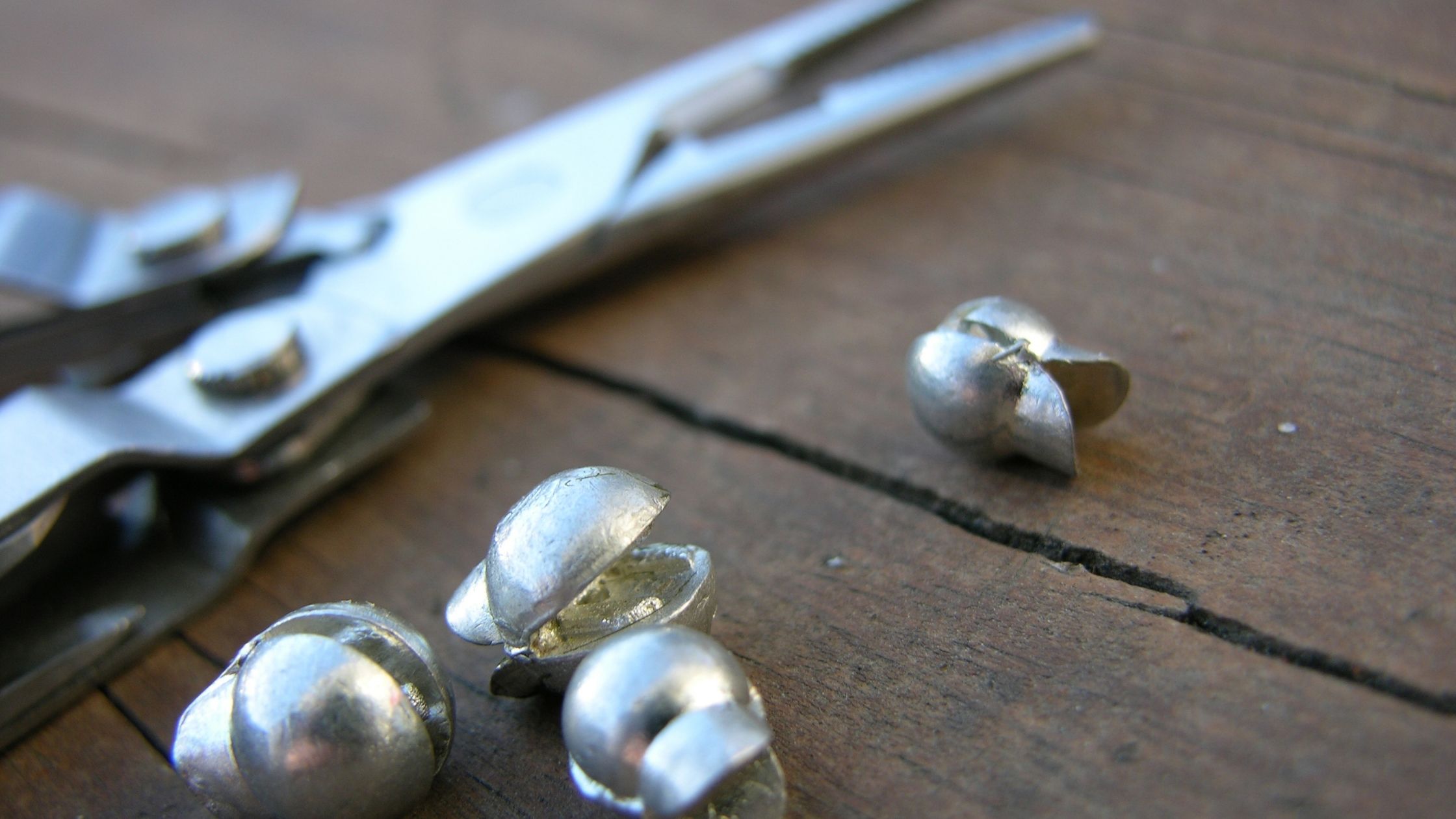
The diminutive split-shot fishing sinkers are incredibly versatile since you can crimp them onto your line wherever needed. The best split-shot sinkers are ones with wings or ears since you can rig them quickly and reuse them with ease.
You can crimp these sinkers individually, onto a dropper line, or in a series to the main fishing line. You can also pinch them onto a snap, swivel, or another type of sinker above a bait to help it get deeper. Alternatively, you can fasten them to the bait itself on a spinner-blade arm or hook shank.
Sliding Fishing Sinkers
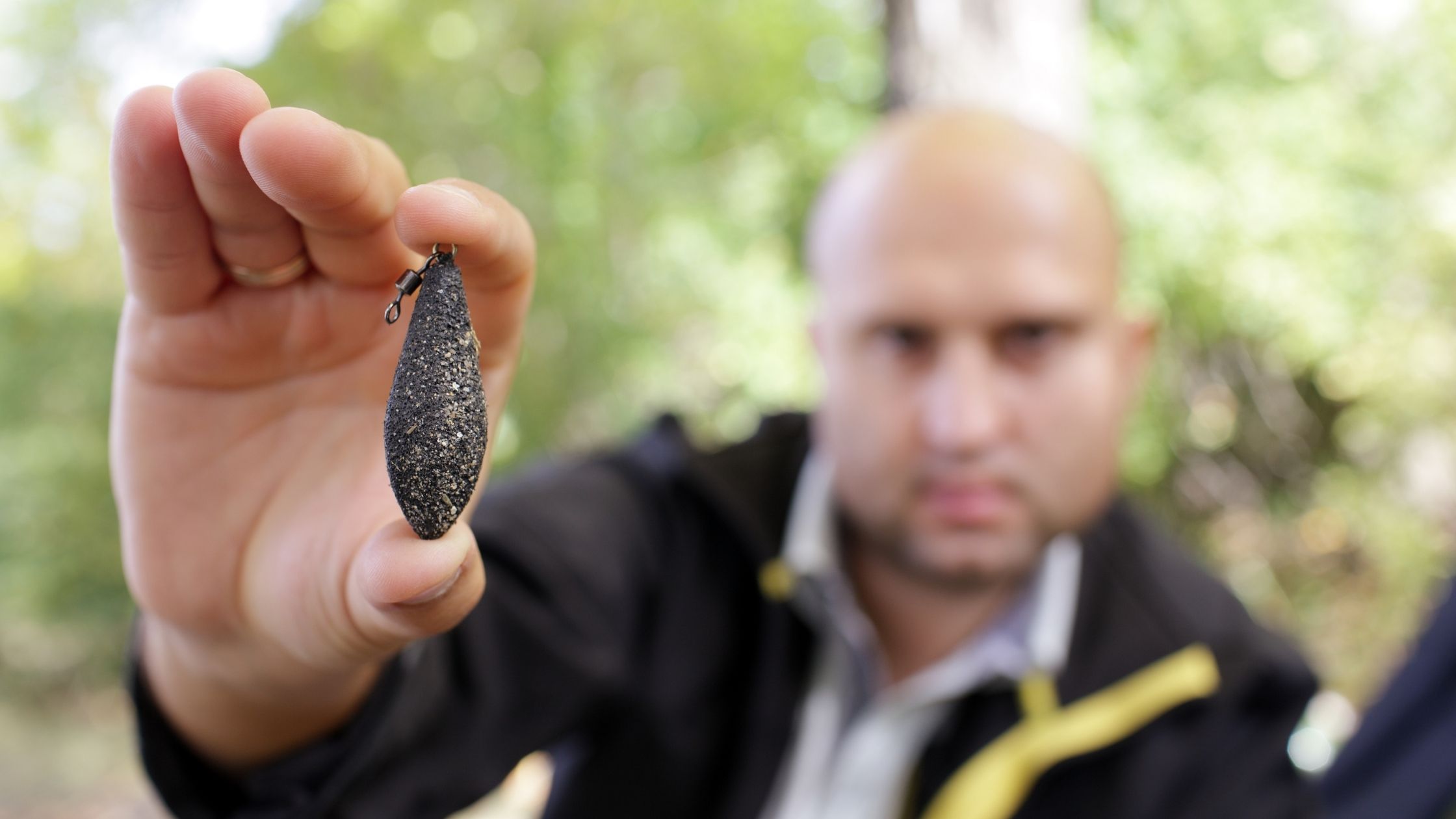
Sliding fishing sinkers are also exceptionally versatile. They have a hole through their centers, and they resist line twists. The barrel sinker is the most common variety of sliding sinkers. Anglers that fish smallmouth bass and walleye typically use these sinkers because they remain stationary at the bottom, allowing the fish to swim off while pulling the line through the weight.
To effectively use these sinkers, you have to run the fishing line through the hole in the middle and then tie the line to a barrel-snap swivel. You will also have to tie a leader from the opposite end of the swivel to a hook or lure. Fit a plastic bead on the line between the swivel and the sinker to prevent it from fraying a knot while fishing.
Rubber-Core Fishing Sinkers
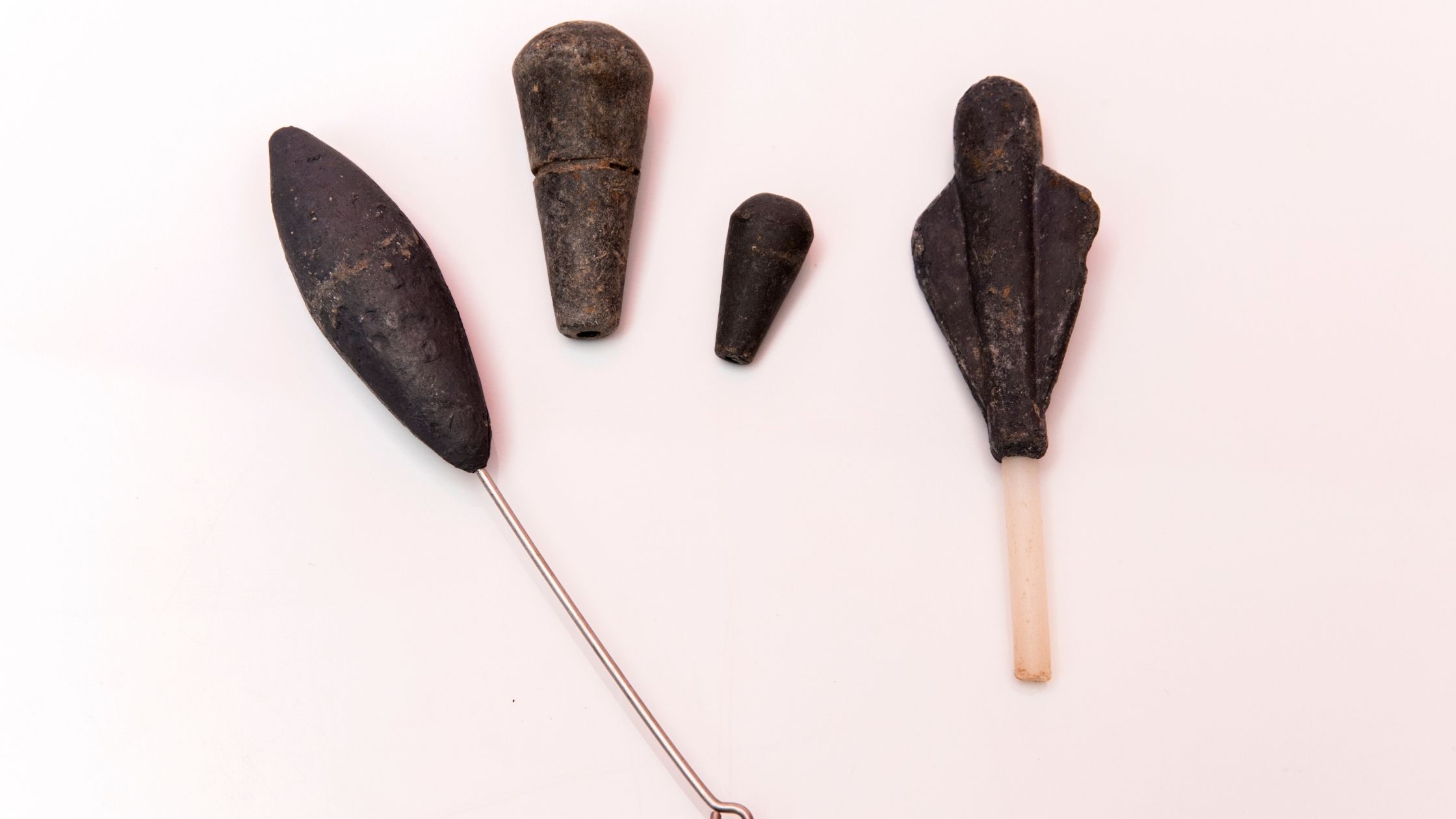
Rubber-core fishing sinkers, also known as Dog-Ear Sinkers, are super easy to fit onto a fishing line. You can use them when you need weights that weigh more than split-shot sinkers. However, make sure that you don’t retrieve them quickly. Otherwise, they might cause a monofilament line twist. They can also jam easily on shell bars and rocky bottoms due to their weight.
Walking Fishing Sinkers
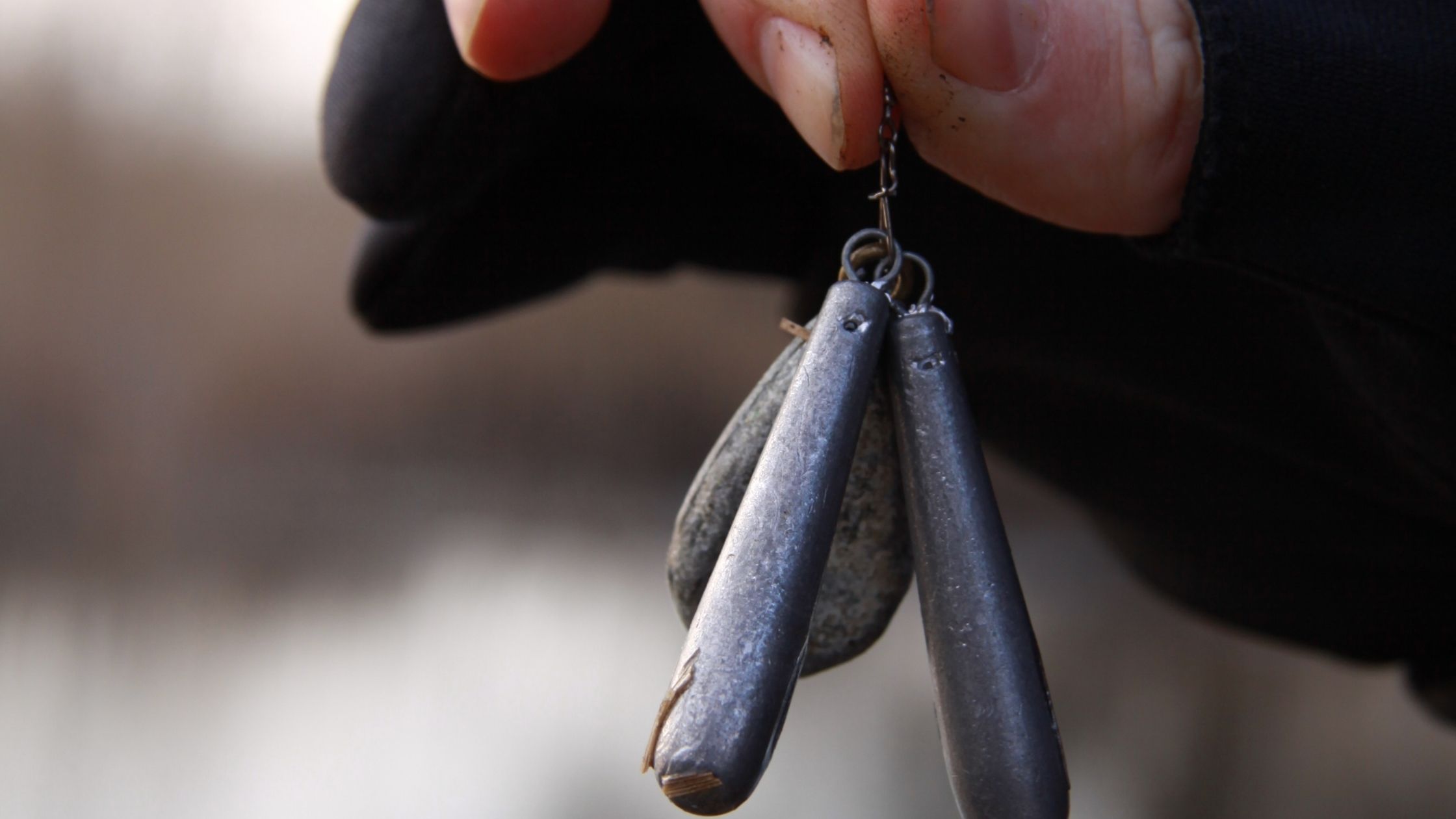
Walking fishing sinkers are specific types of sliding sinkers shaped like a bank sinker with a bent bottom near the line hole and squarer sides. You can use them by threading the line through the hole, tying the barrel swivel, and then running a leader from the swivel to the hook for bait.
These types of sinkers are designed to walk along the bottom during drifting and slow trolling. You can use these weights with lures, but their original use was for accurate trolling with natural baits. You can use them to catch smallmouths, walleyes, bass, etc.
Worm Weights Fishing Sinkers
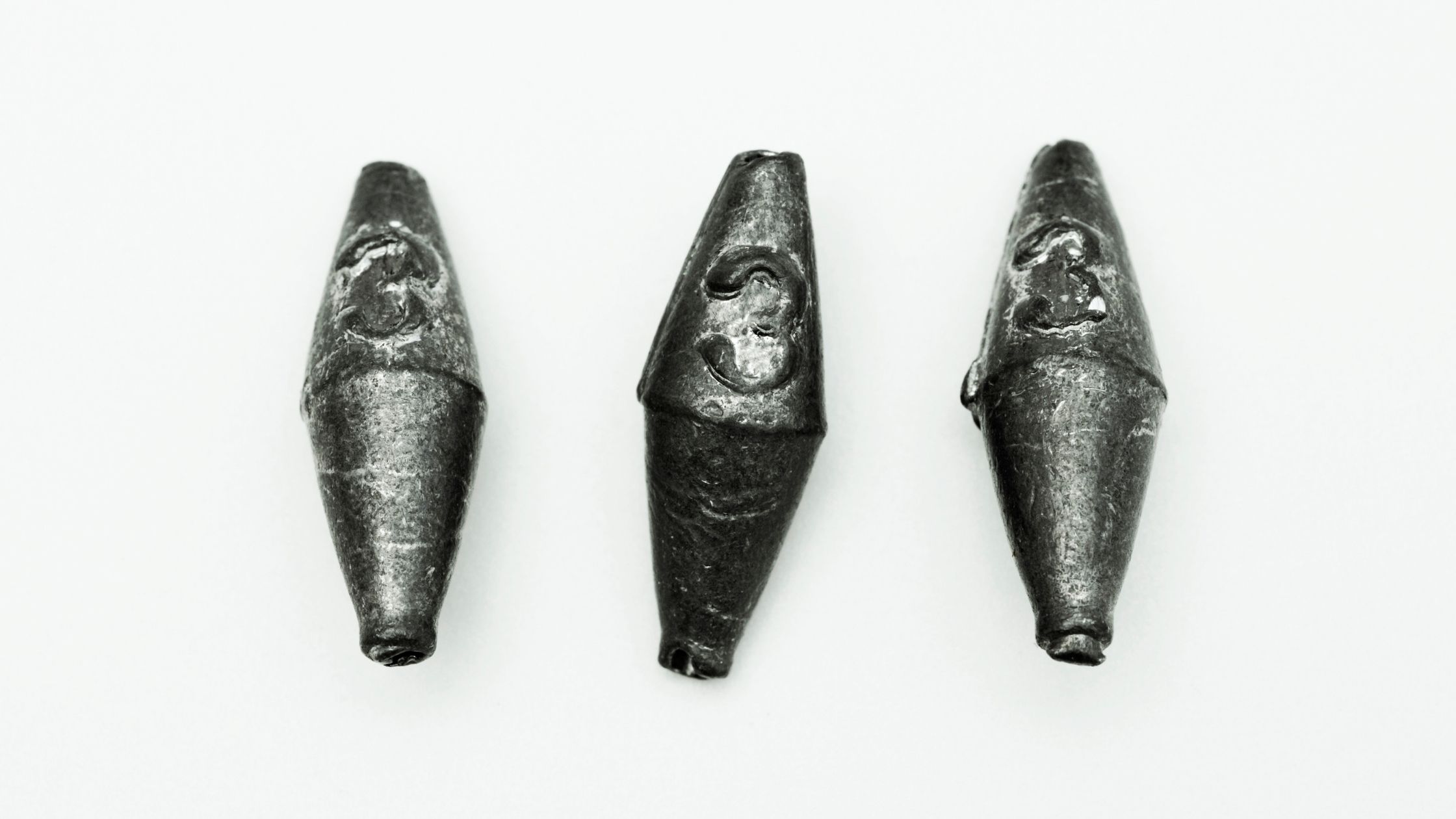
Worm Weights Fishing Sinkers or bullet sinkers are cone-shaped lead pieces with a hole through their center. Anglers use them for freshwater bass fishing with soft plastic lures. These easy-to-use sinkers are available in many weights.
You can use them with grubs, plastic worms, and even natural baits through vegetation and weed patches since the sinkers’ cone shape allows them to bore and slide easily through obstructions. You can also peg them to one spot on a fishing line with a toothpick, using them as a jig.
Flat, Coin, Disk, and No-Roll Fishing Sinkers
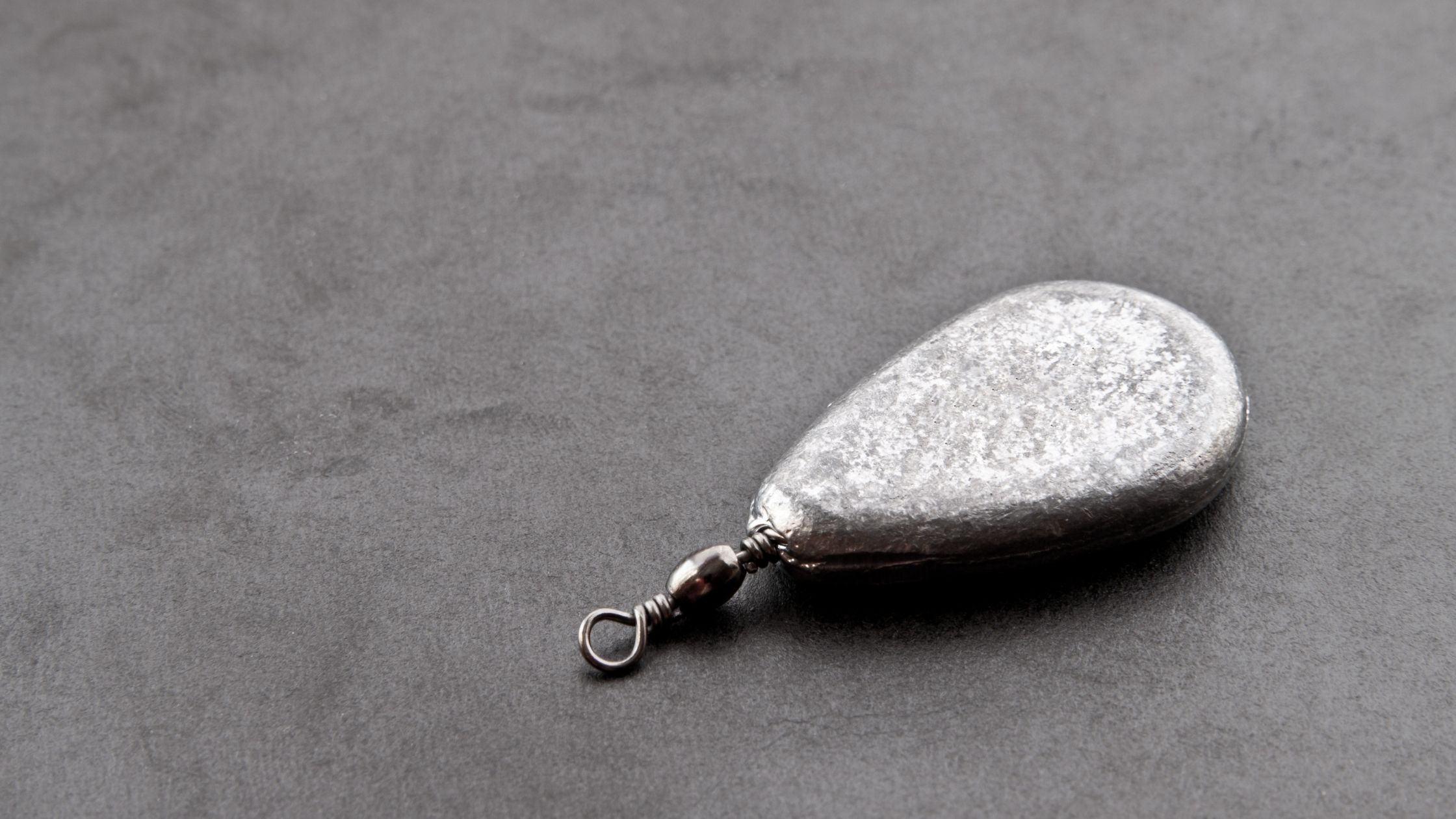
Flat fishing sinkers, such as coin fishing sinkers and disk fishing sinkers, are ideal for stationary fishing. These no-roll fishing sinkers lay completely flat or horizontal at the bottom and resist rolling or tumbling in the water current.
Tidewater and river anglers live these sinkers due to their stationary nature. You can rig them with a leader and swivel, similar to a walking sinker. However, these sinkers are best used for stationary fishing, typically with natural baits.
Pyramid Fishing Sinkers
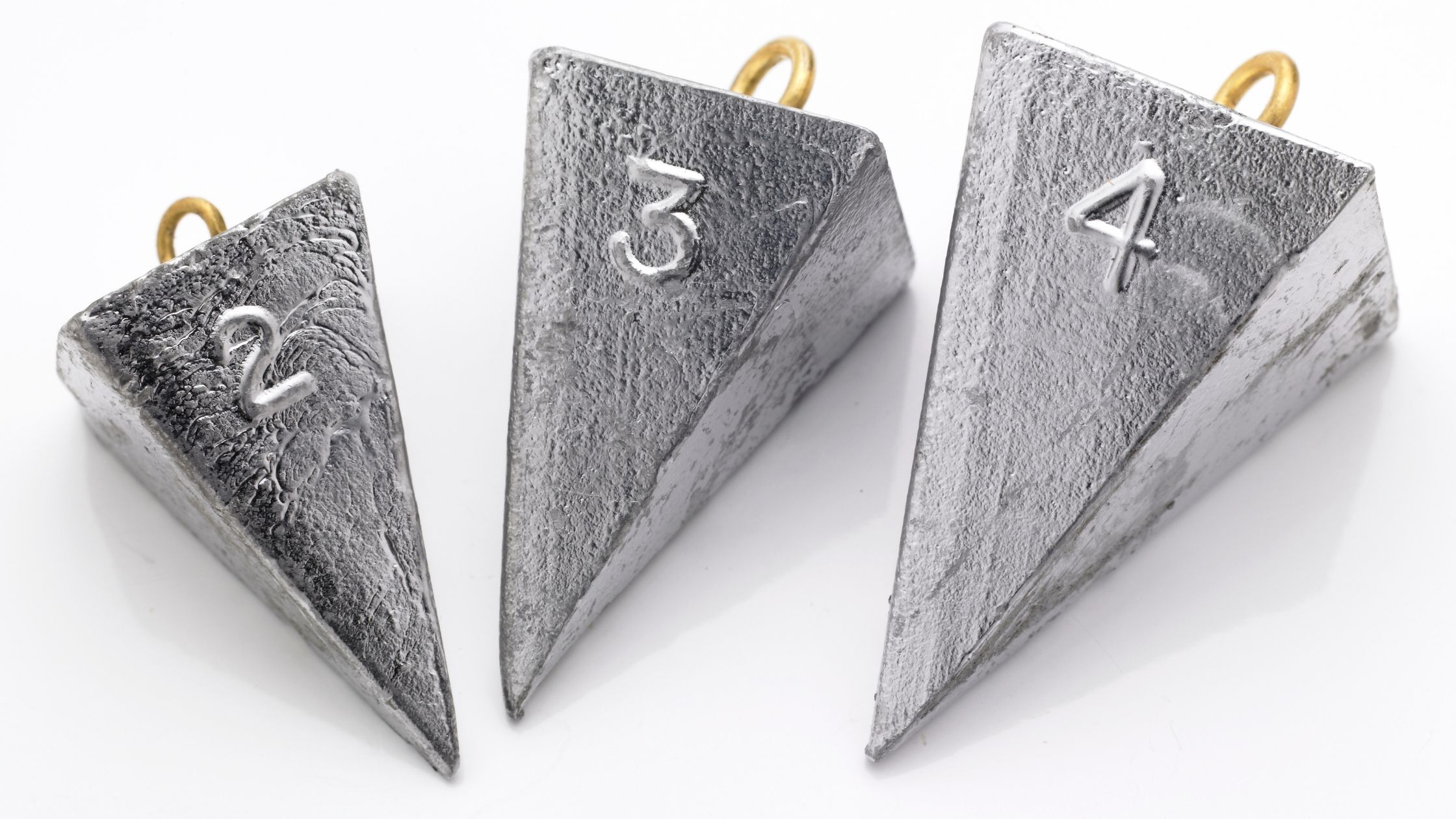
Pyramid fishing sinkers are designed for stationary bait-soaking purposes. These are four-sided sinkers shaped like a pyramid with a point at one end. Their design enables them to resist tumbling in the current. They are typically used by catfish-chasing anglers who are shorebound. You can also use them to hold live baits in popular fishing spots for species such as trout, bass, stripers, walleye, and pike.
Dipsey Fishing Sinkers
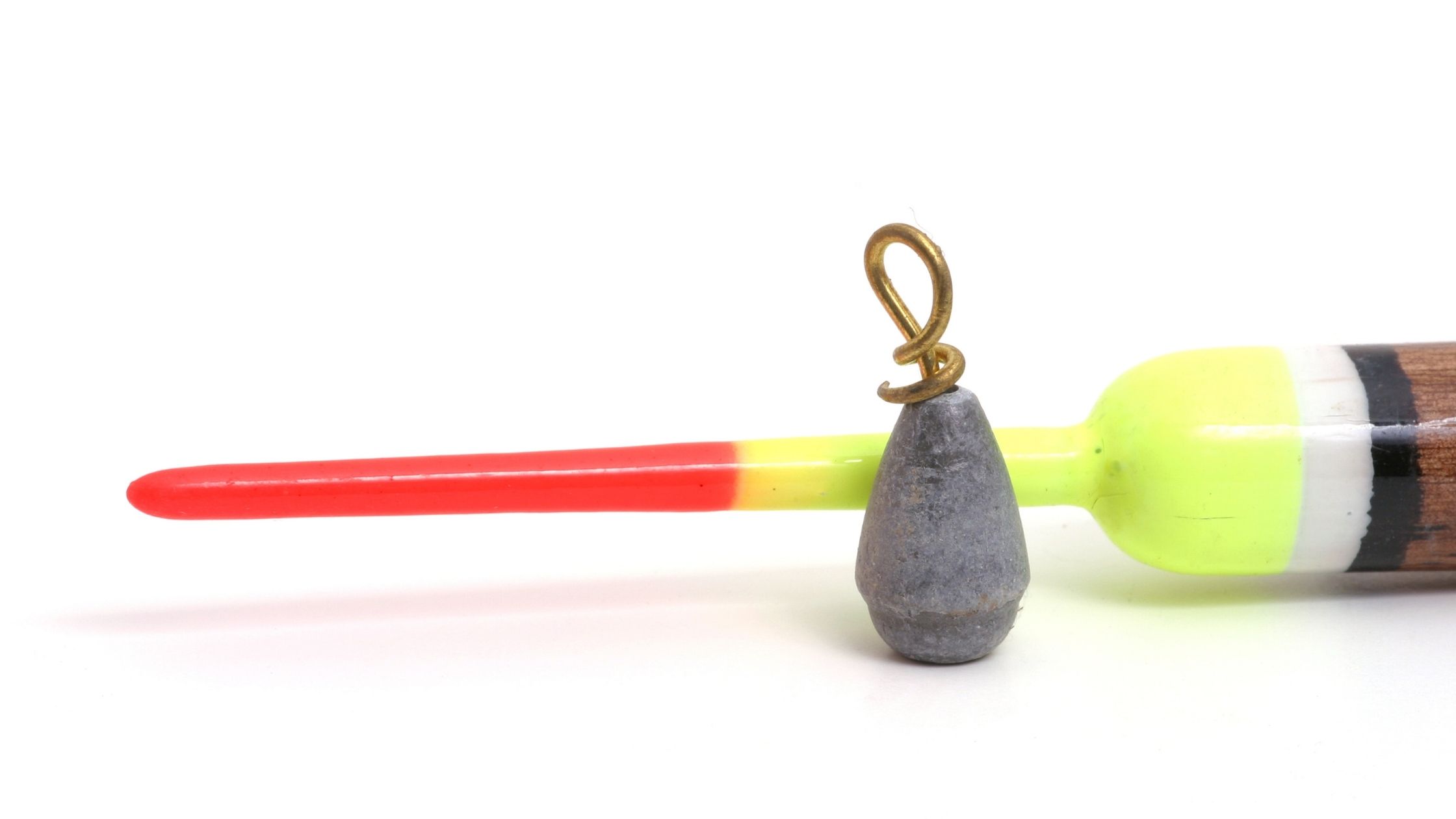
Dipsey fishing sinkers are rounded sinkers with a singular wire inserted into the weight and a twisted wire loop at the end for attaching the line. Some of these sinkers have a locking loop that you can use to attach them to the line swiftly without cutting or retying baits or lures.
Bank Fishing Sinkers
Bank fishing sinkers are simple to lead sinkers with a tapered end with a hole running through it for threading the leader or line. Many anglers use these sinkers with a sinker slide. It fits onto the fishing line with a tiny plastic sleeve, allowing you to quickly change the shape or weight of the sinker.
Helmet Fishing Sinkers
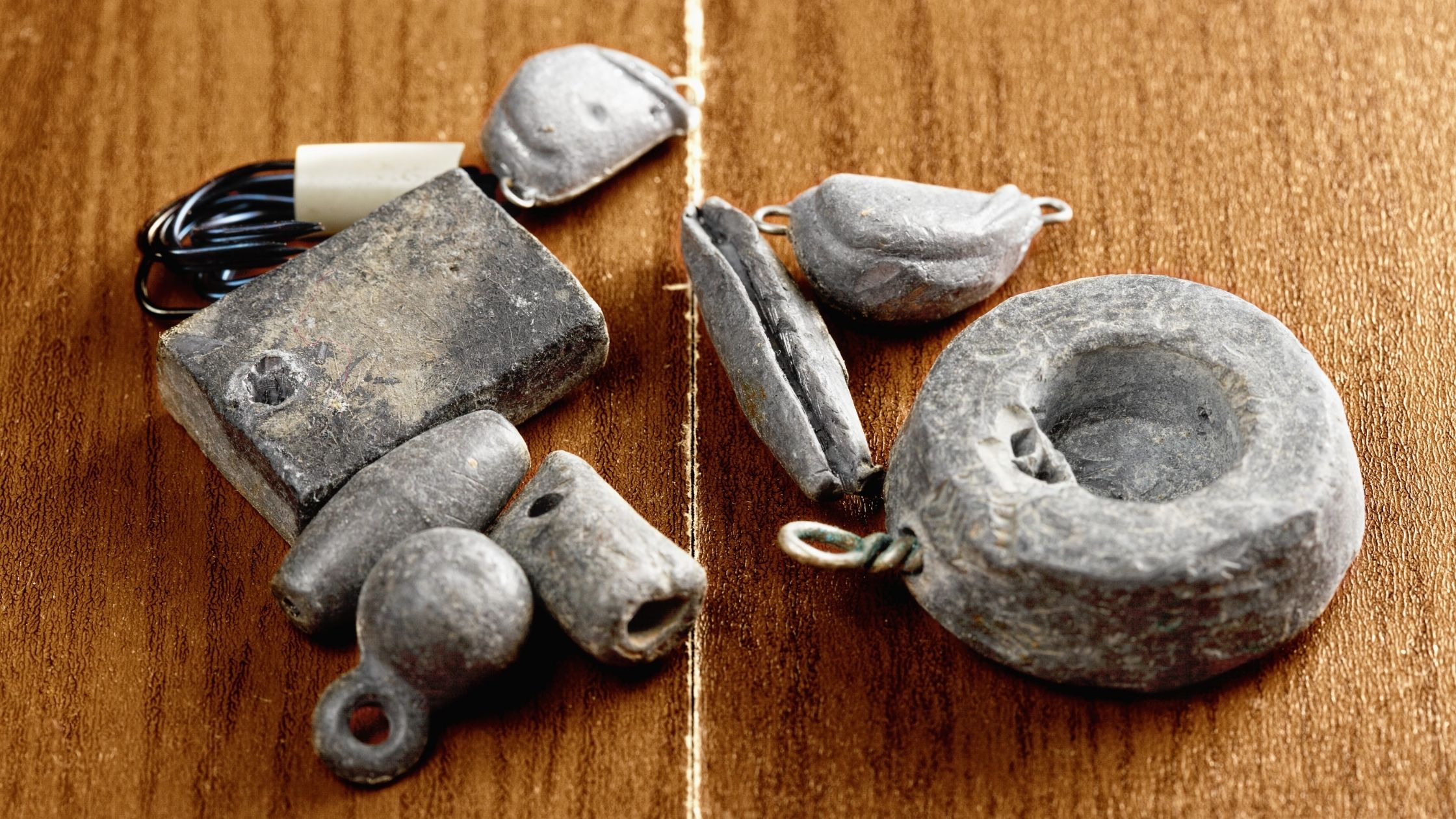
Helmet fishing sinkers are typically used for beach fishing. However, you can also use them when fishing off the rocks. These sinkers have a broad end that should always face away from the direction of the tide. For instance, if the tide is rising, the flat end should be toward the mainline.
Also, if you want to anchor a large bait to this sinker, make sure to keep the separate trace attached to the singer as long as possible.
Trolling Fishing Sinkers
Trolling fishing sinkers are designed to be used while trolling lures and baits. These types of sinkers are slender and long. Some of these sinkers have simple wire loops at each end for attaching them to the leader and line ahead of lures and baits.
Since trolling can result in a line twist, some of these sinkers are fitted with a chain of swivels at each end to prevent it from happening. You can use these sinkers to get bait and lure deep when you don’t have wire lines or downriggers.
Spoon Fishing Sinkers
Spoon fishing sinkers are used by anglers who fish off the rocks. These sinkers are designed to allow you to lower your rod (Types of Fishing Rods) tip down to the water surface while winding in the slackline simultaneously. It allows you to pull the sinker off the bottom of the water body in one good life pull. The shape of the sinker will force it to rise off the bottom, after which you will need to wind it steadily.
No-Snag Flexi Weight Fishing Sinkers
No-Snag Flexi Weight Fishing Sinkers enable anglers to add a slender weight or series of weights covered in rubber shrink wrap to their fishing line to lure deep and get baits. You can use these sinkers for trolling, bass casting, and drift fishing for trout, salmon, and stripers. You can also attach these sinkers to other sinkers in a rig.
Pencil Fishing Sinkers
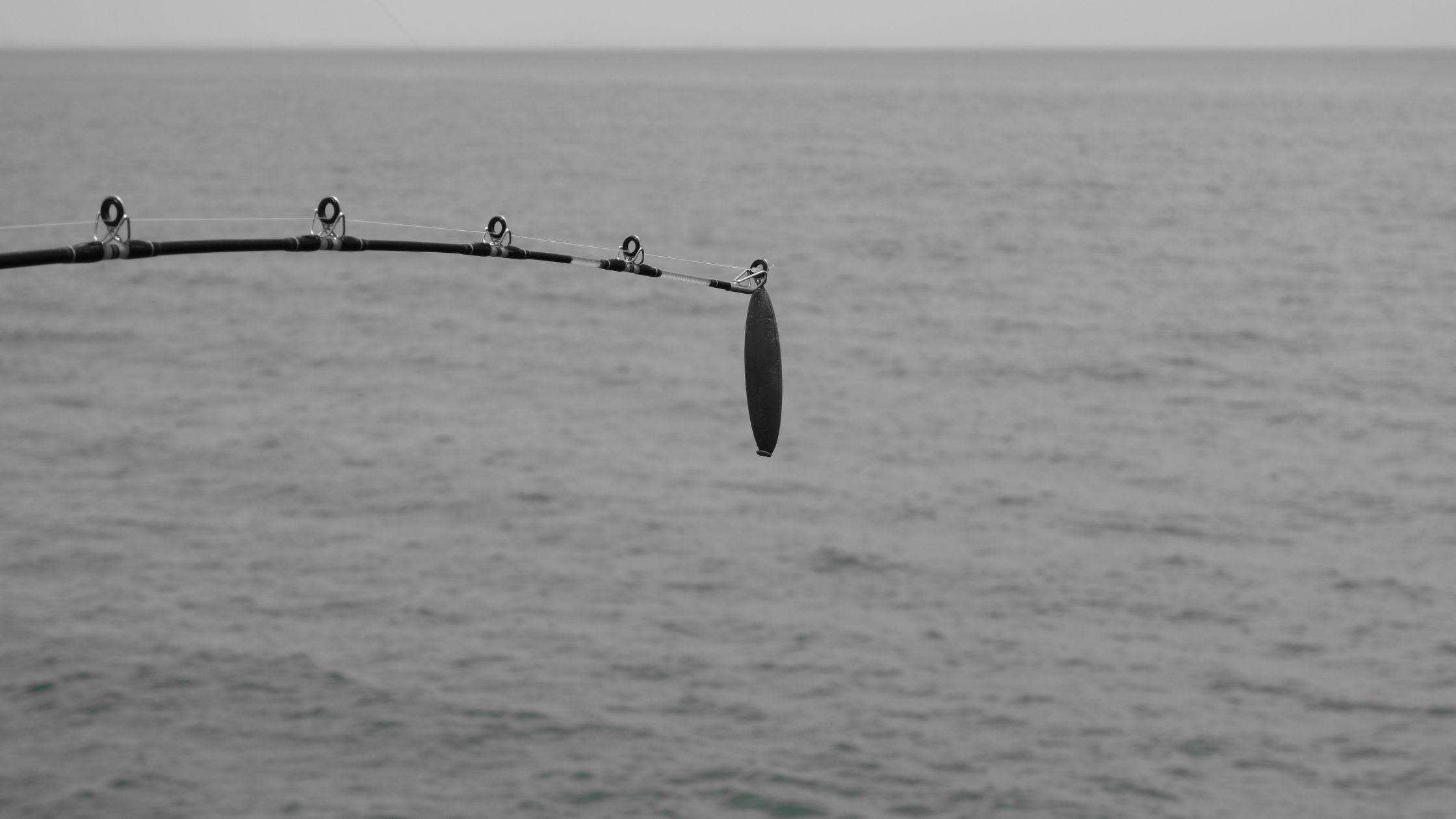
Pencil Fishing Sinkers are typically used by steelhead and salmon anglers. These sinkers are designed to avoid snags in streams and rivers. Typically, they have a wire ring at one end to attach the leader, line, and other terminal riggings. You can use two or more of these sinkers at a time to enjoy deep fishing.
Some pencil fishing sinkers are rigged with surgical tubing to enable them to be pushed into open tubing to take lures and baits deep into the body of water. If you need a different weight, you can remove the pencil lead from the tubing and push a different size into the tube.
Drop-Shot Fishing Sinkers
Drop-Shot Fishing Sinkers are ball-shaped sinkers with a looped wire attached to their top. The wire loop is to fit the fishing line snugly for a drop-shot rig to take it deep into the water body without tying the line to the lead. It allows you to quickly adjust the weight for varied fishing depths.
Many of these sinkers are rounded to resist bottom foiling. However, the Lunker City Bakudan drop-shot fishing sinkers have an innovative design; they are long, slender, and pencil-shaped and have a wireline attachment at one end. Their unique shape enables them to resist deep snags.
No-Snagg Fishing Sinkers
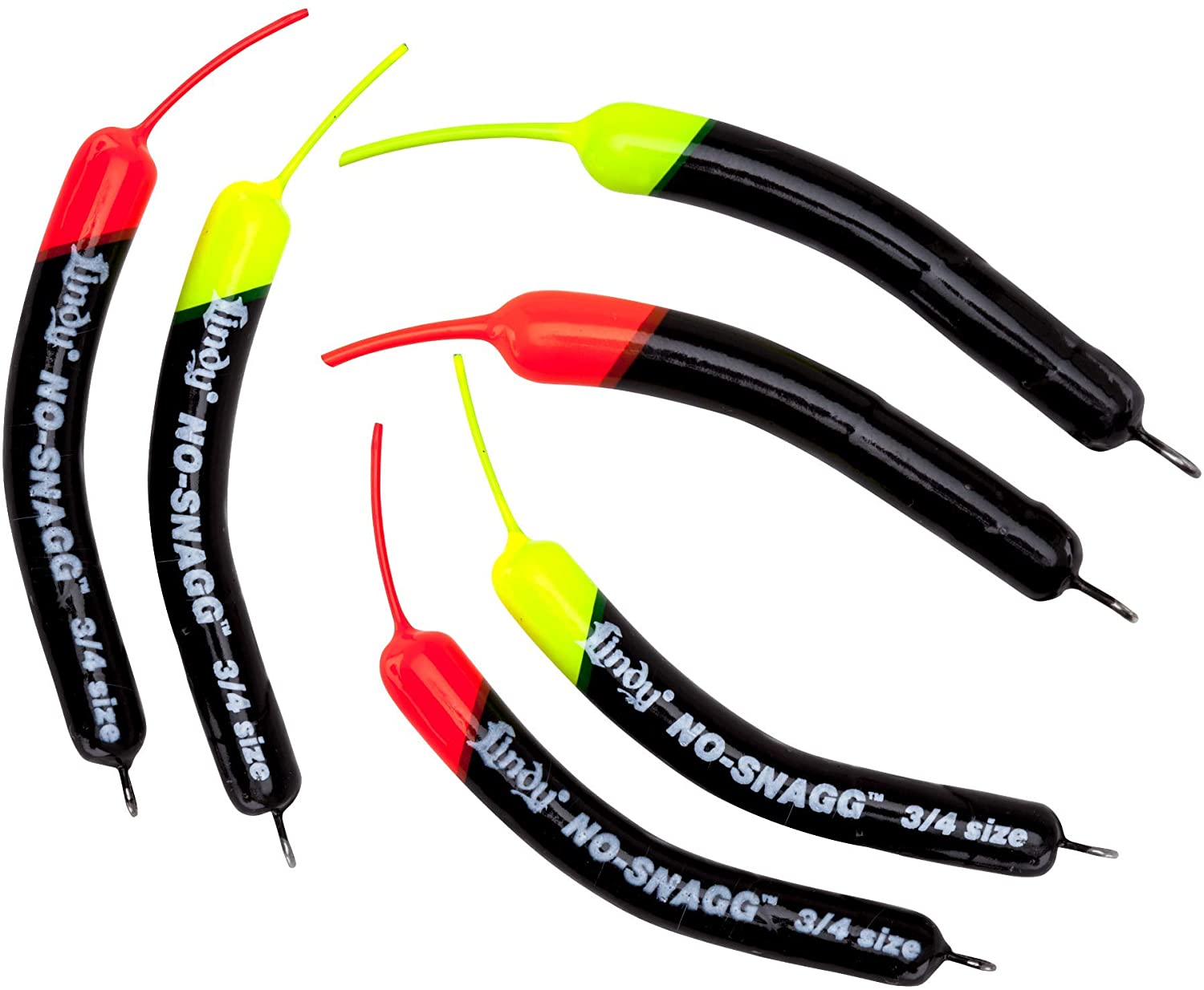
No-Snagg Fishing Sinkers feature a slight bend at the bottom. They also have a bottom-bumper-style wire probe, enabling them to glide over shells, rocks, and other barriers when taking baits deep under the water during slow-trolling and drifting.
The Bottom Line on Types of Fishing Sinkers
There are many types of fishing sinkers available for anglers to use today. The most common ones include pyramid, bank, and split-shot sinkers. You can use these sinkers to hold your bait and sink it to the bottom of the water body to attract your target fish.
If you’re confused about which sinker weight you should use, you must follow this rule of thumb; for shallow waters, choose a lighter sinker, and for deeper waters, use a heavier sinker. The type of sinker you use will also depend on the water body, its current, and the positioning of your bait.
Shop Now


